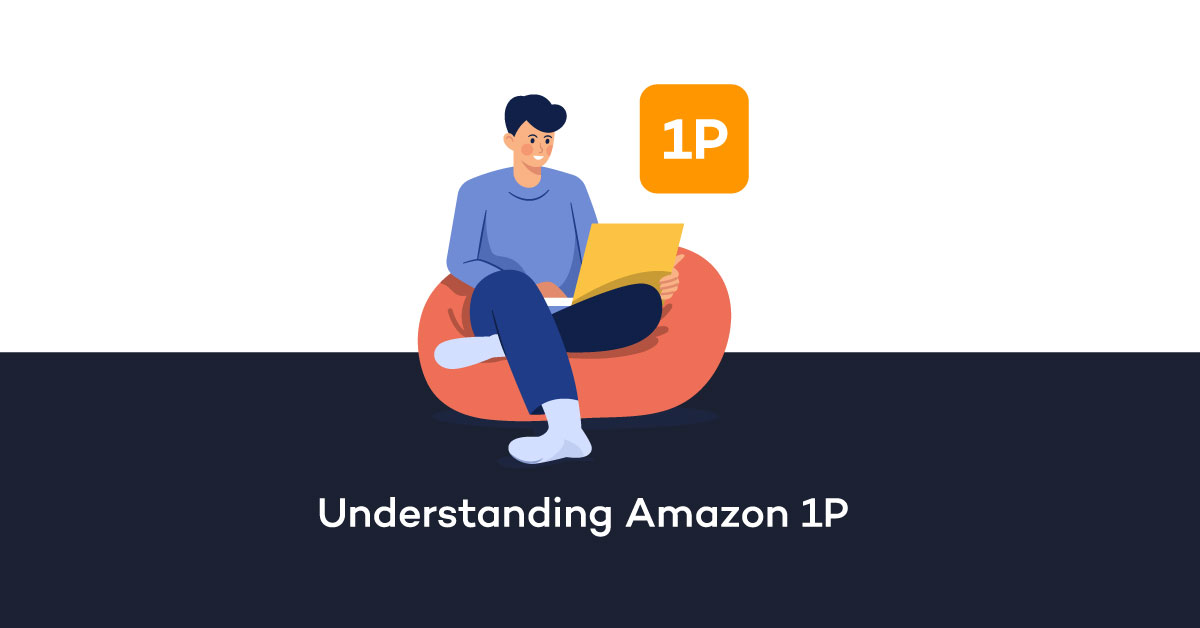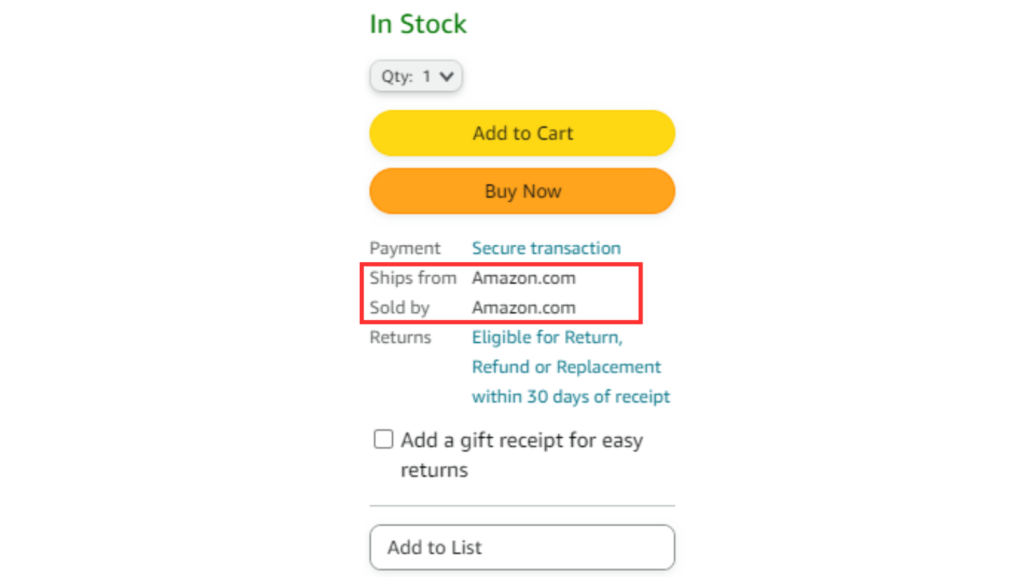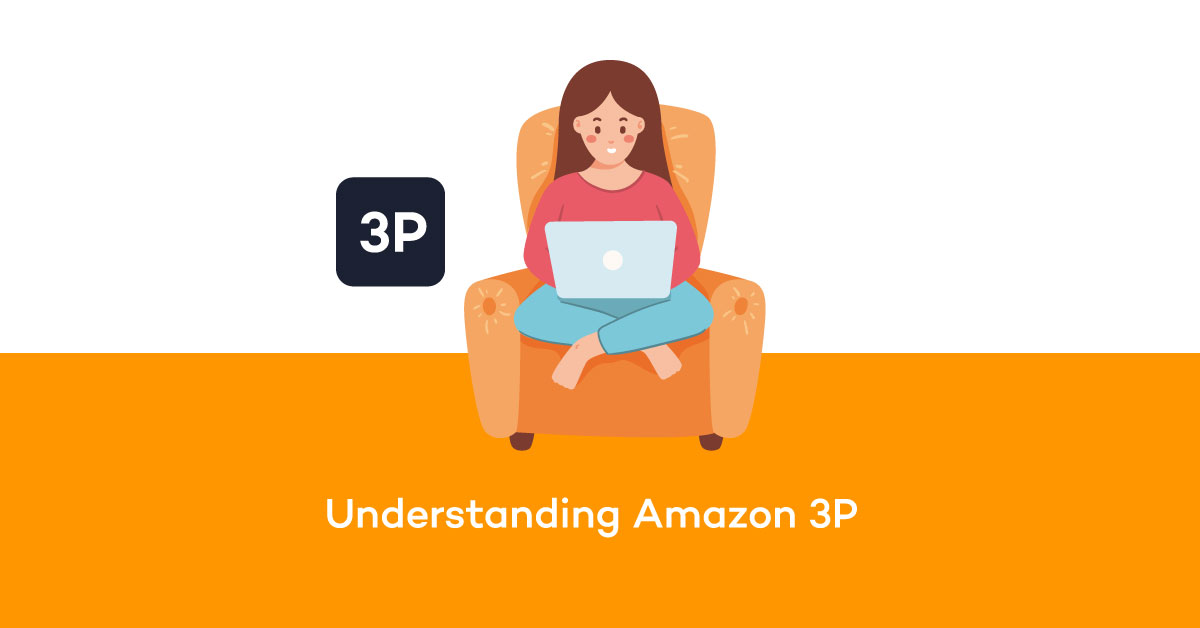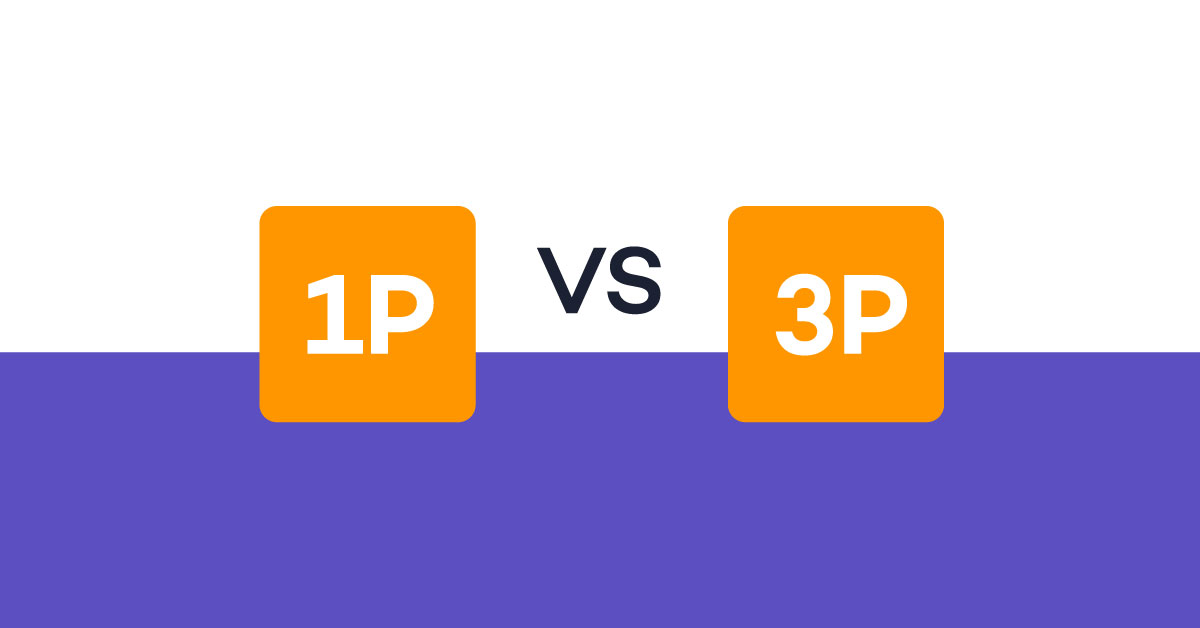To effectively sell on Amazon, it is essential to have a grasp of the terminology commonly used in the business. If you are currently selling on Amazon or intend to become a seller, you might have already encountered the terms 1P and 3P.
In this article, we will discuss 1P and 3P, its pros and cons, and how these terms relate to Amazon.
The Difference Between Amazon 3P and 1P Selling
Both 3P and 1P involve selling items on Amazon, but the main difference is the target customer. With 1P, you are selling directly to Amazon, whereas 3P means selling directly to customers visiting the Amazon website.
What is Amazon 1P? | Vendor Central
Amazon 1P is a first-party selling option. It pertains mainly to manufacturers, distributors, or brand owners acting as sellers to Amazon. Amazon purchases products in bulk from these sellers through Amazon Vendor Central.
Your primary role as a first-party seller is to fulfill the purchase order of Amazon. You will be responsible for sending these orders to Amazon.
Once the inventory products are received, Amazon will take full control of the product, including its pricing and marketing. Amazon will be selling your products under its name, and it will also be the one handling the shipping, customer service, and Amazon returns.
Amazon 1P Pros
Improved Visibility: Embracing the role of a 1P seller means better product visibility. With Amazon having control of your product, you are assured of better product placement and marketing opportunities.
Less Burden: Since Amazon will be taking ownership of your product, the burden of customer service and sales tax collection will not be your concern anymore. Amazon will be the one to perform such tedious tasks.
Simplified Inventory: Since Amazon orders large quantities, you can sell your products in bulk. Thus, simplifying your inventory management.
Trustworthy Label: Once Amazon sells your product under its name, it will have a unique label. 1P products get the “Sold by Amazon.com” label which boosts the confidence of Amazon shoppers in purchasing the listed product.
Image Source: Amazon
Amazon 1P Cons
Uncertainty: Despite having established a connection with Amazon as a 1P seller, you might still be dropped by Amazon for various reasons. Hence, 1P sellers should always abide by Amazon Vendor Central guidelines.
Limited Control: When you are a 1P seller, you will not have control over product pricing, shipping, and inventory. Amazon has complete control over those things and would sometimes bypass your MAP pricing (minimum advertised price).
Low-Profit Margin: You cannot expect a huge profit margin when you sell directly to Amazon. As an Amazon 1P seller, you typically receive lower profit as compared to Amazon third-party sellers.
Payment Terms: One of the drawbacks when selling directly to Amazon as a 1P seller is the slow payment method. Amazon’s payment terms can be as long as 30 to 90 days, which makes it challenging for some businesses’ cash flow.
What is Amazon 3P? | Seller Central
A more popular Amazon selling option for online sellers and retailers is 3P. It refers to the third-party selling option Amazon offers to those who want to sell directly to customers via Amazon marketplaces.
Unlike Amazon 1P, where transactions are made via Vendor Central, Amazon 3P sellers list their products via Seller Central. Under 3P, a third-party seller may choose to sell either under the Amazon FBA program or Amazon FBM.
Fulfillment by Amazon or FBA is a service offered by Amazon wherein it will be the one to pick, pack, store, and ship your products. Moreover, under the FBA program, Amazon will also be the one to handle customer service and Amazon returns.
On the other hand, Fulfillment by Merchant or Amazon FBM is a selling method where sellers list their items on Amazon, but unlike FBA, the storing, shipping, and customer support are handled by third-party sellers independently.
Amazon 3P Pros
More Control: 3P sellers on Amazon have greater control over their Amazon business, unlike 1P sellers. Third-party Amazon sellers have control over their products’ listing, pricing, advertising, and more.
Better Profitability: Since sellers handle product pricing directly, they can choose how much they want to sell their products. In most cases, Amazon sellers use Amazon repricers for price optimization to obtain a more competitive price.
Global Selling Option: Amazon 3P sellers can list their products on multiple Amazon marketplaces via Seller Central. With the Amazon Global program, third-party sellers can sell their products to consumers around the globe, including those in India, Japan, France, Germany, and more.
Amazon 3P Cons
Amazon Seller Fees: You will be dealing with numerous seller fees when selling on Amazon as a 3P seller. These fees vary depending on the size and weight of your product and how long it will be stored in the fulfillment center.
More Tasks: 3P sellers are sometimes overwhelmed by the tasks required when selling on Amazon. Unlike Amazon 1P, where Amazon handles almost all business-related tasks, 3P requires sellers to handle tedious tasks from listing, advertising, and inventory management.
To automate some aspects of these tasks, sellers often use Amazon seller tools, like Amazon Ads solutions for advertising and AI repricers for automated price adjustments.
Tax Handling: Amazon 3P sellers will have to handle their taxes, including sales tax and VAT. This task can be confusing and demanding for most sellers, which is why most third-party sellers employ the help of tax service companies to handle business tax matters.
How to Become an Amazon 1P Seller
Becoming an Amazon 1P seller is more challenging than becoming a 3P seller. For one, there is no way for sellers or entrepreneurs to apply directly. Amazon Vendor Central is currently on an invite-only basis.
While there is no fixed blueprint for becoming a 1P seller on Amazon, many online resources recommend establishing a solid reputation as a reliable third-party seller. It helps catch the attention of Amazon brand managers or vendor recruiters.
Moreover, it is crucial to cultivate a robust brand identity not only within the Amazon platform but also beyond it. This could involve participating in trade shows or eCommerce exhibits to enhance your brand presence.
Generally, the best way to be invited into the Amazon Vendor program and become a 1P seller is to:
• Have popular products on the Amazon marketplace.
• Maintain high sales performance on Seller Central.
• Introduce a product capable of attracting consumers and Vendor Central recruiters.
If Amazon finds your products or brand highly interesting, they will contact you via email. Their recruitment team will explain further the process of joining Amazon Vendor Central and the terms of business.
How to Become an Amazon 3P Seller
Becoming a 3P seller is easier compared to becoming a 1P seller. Anyone can sign-up to become a third-party seller on Amazon.
Becoming a 3P seller on Amazon means having multiple options in terms of business models. You can be an Amazon arbitrage seller, Amazon private label seller, wholesale seller, handmade seller, or even dropshipper.
If you want to become a third-party seller on Amazon, we have created a step-by-step guide on How to Become an Amazon Seller.
Amazon 1P vs 3P: Important Things You Should Know
Whether selling directly to Amazon or online shoppers, you must establish a strategy to make your Amazon business more efficient. To help you create a strategy for your Amazon 1P or Amazon 3P business, here are some of the crucial aspects of the business you should take into account:
Listing Customization and Flexibility
It is worth emphasizing that with Amazon 1P, it is Amazon who controls the product listings. Amazon can change product listing details, including the title or image used and the listing description.
As for Amazon 3P sellers, they have more control over the product listings. This gives sellers better flexibility when enhancing their brand, for they can customize their keywords, imagery, and other listing content. However, such customization should still align with Amazon product listing guidelines.
Account Dynamics
In terms of how you will manage your account and interact with your customers, you must familiarize yourself with Amazon Vendor Central account or Amazon Seller Central account.
For first-party sellers, you will manage your transactional relationship with Amazon through the Vendor Central portal. Vendor Central allows you to manage orders, generate sales reports, and more.
On the other hand, third-party sellers, be they FBA or FBM sellers, handle their business via Amazon Seller Central. Seller Central is a portal exclusive to third-party sellers on Amazon. They can see and manage their listings, orders, sales reports, fulfillment, relevant metrics, and seller functions.
Cash Flow
Whether it is an online business or a traditional business, cash flow is of great importance. Advance planning is vital to avoid cash flow problems affecting your business operation and your transactional relationship with your wholesale supplier or manufacturer. Undermining such a relationship with suppliers can decrease the chances of negotiating a better wholesale price for your inventory.
To avoid such a scenario, it will help to know that Amazon 1P and 3P have different payment terms. As mentioned earlier, the typical payment terms for first-party sellers can be 30 to 90 days, whereas fund transfers for third-party sellers only take 14 days.
Knowing these payment terms for each type of Amazon business can help you manage your finances and grow your business exponentially.
Fees
For third-party sellers, some of the fees to note include referral fees, fulfillment fees, variable closing fees, storage fees, and selling plan fees that vary depending on your chosen plan. Sellers who choose the Professional selling plan will have to pay a monthly recurring of $39.99, whereas the Individual selling plan will come with a flat fee of $0.99 per unit sold.
On the other hand, the standard fees 1P sellers should prepare for include marketing, remittance, co-op, and packaging fees. Amazon may also charge vendors with a penalty in the form of chargebacks that can impact profit margins.
Customer Interaction
Customer interaction is another aspect of the business that requires careful consideration. If you intend to sell directly to Amazon as a 1P seller, your interaction with end customers is somewhat limited, as Amazon’s own customer service team will handle customer concerns for the products they sell under their own brand.
Conversely, 3P sellers interact more with their customers since they sell directly to Amazon shoppers. This leads to better customer service and enhanced online presence.
Inventory Management
Inventory management is a crucial part of any business. When selling on Amazon, consider how you can manage your inventory efficiently to avoid any delays and mitigate inventory risk.
For 1P sellers, most of the inventory management tasks are performed by Amazon. However, you should be prepared to deal with potential inventory buyback if the products will not perform well in the market.
As for Amazon 3P, most of the inventory management tasks are performed by third-party sellers. Third-party sellers are encouraged to maintain inventory levels and develop efficient forecasting to avoid stockouts or overstock situations. This, in turn, helps sellers improve the metrics of their Amazon seller account.
Branding
Becoming an Amazon third-party seller means you have a better opportunity to establish and showcase your brand identity to online shoppers. However, if you prefer to become a 1P seller, it is essential to be ready to deal with the potential decrease of your brand visibility, as products are labeled as “Ships from and sold by Amazon.”
Considering all these insights and understanding the limitations of each account type can aid you in devising a more effective business strategy to enhance the overall success of your Amazon 3P or Amazon 1P business.
Choosing the Right Path for Your Business
Amazon offers a huge opportunity for online sellers and business owners. Whether you engage as a first-party (1P) seller or a third-party (3P) seller on Amazon, each avenue has its own advantages and disadvantages. Considering the outlined pros and cons above, you can better assess the suitable path for your journey as an online entrepreneur.
It is essential to acknowledge that becoming a 1P seller on Amazon can prove to be demanding, mainly due to its exclusivity. On the other hand, if you aim to swiftly launch your Amazon business, opting for the 3P seller route is more viable.






